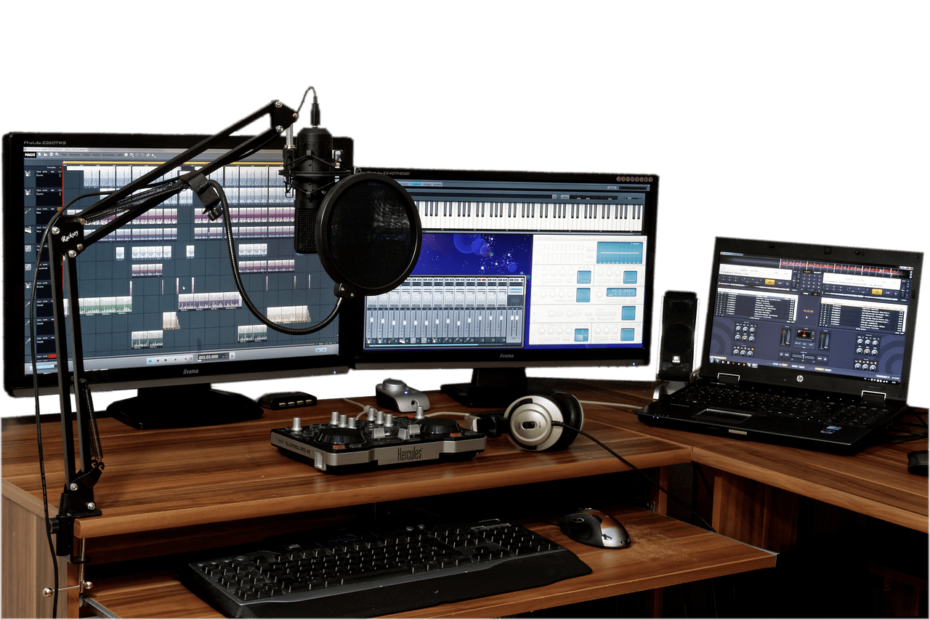I’m beginning to get asked a lot of questions about recording audio. I’m thinking about voice recordings of Scripture. Here are some things to think about:
- Equipment – you only need a USB microphone or decent headset with microphone, or a condenser microphone with pop filter and sound card (that plugs into your USB port)
- You also need to make an acoustic baffle to absorb sound. This will cut out unwanted echo called ‘reverb’. Reverb can always be added later but there is no button to remove reverb, and people like FCBH, who we work with, are fussy about these things, as they know a voice with reverb is hard to listen to and understand (music, on the other hand, needs some reverb, especially the vocals). https://www.youtube.com/watch?v=1bTK6tZzzaE is a good video on how to make a simple acoustic baffle. You can make a small tent in your room, but this gets hot and stuffy in places like Central Asia…
- Make sure the sound level is good. Too high and it will ‘clip’ (distort). Too low and it will sound noisy. The best way to do this is to use a program like audacity and watch the meter. It shouldn’t go into the red, but it should be just short of that. A good microphone will have adjustment built in, but you can always adjust it in audacity, or in your sound settings in Windows. Don’t use automatic adjustment of the volume level as this will pick up a loud noise then make the mic really quiet. Adjust it yourself. See below for some screenshots:
- Think about file management. If you record in Audacity or a similar program you’ll have to do all of this yourself. If you use an FCBH program, or SIL’s ‘Here This‘ you can let the program take care of the file management for you. Remember that the files should sort automatically in Windows, so you need to have 01Gen01, 01Gen02, 02Exo01 and so on as your filenames, or use the local language filenames like 01GelipÇykyş01 only it’s best to avoid special characters if you can. So 01GelipCykys01 or 01GelipChykysh01 will work better. In the end you want your audience to be able to access these files (if on an mp3 player), so use sensible names. Also you can make sure the metadata is correct. edit that in a program like Groove. Here’s info on how to do that. Here’s info on how to change the filename of multiple files in one go.
Here’s a screenshot of an audacity file with a good audio level:

The meter is in the middle of the top, where it says ‘Click to Start Monitoring’. You want the level to go up above -6db but not go over 0db. Sound levels are measured in decibels (db), and anything above 0 means it’s clipping (distorting).
I hope that helps you to get started in sound recording! If you want expert help we have a whole department in SIL called IMS (International Media Services) who can give you better advice than me, and of course partners like FCBH too…
FCBH: Faith Comes By Hearing

Great information David!
Another audio program that is free and fairly easy to use is called Ocenaudio (https://www.ocenaudio.com/)
A few other tips I’ve found helpful…
For mics, don’t rule out the use of a cheap lapel (lavalier) mic. We’ve had great success with mics costings as little as $1 off of eBay. In general, the closer the mic is to your audio source (without swallowing it!), the better your audio will be. You don’t need to spend a fortune to really improve the the quality of your audio recordings.
For an acoustic baffle, even dampening the echo from hard floors and wells can make a big difference. This can be accomplished with an area carpet on tile or other hard floors and tacking up up towels or blankets on hard walls (of course, in Central Asia your wall may already have a carpet!).
Be aware of other ambient noise like house fans, animals, street noise, and even your computer (many have fans running that can add considerable noise to your recording. Use a pair of over the ear headphones (or whatever you have) to monitor the sound (or do a test recording) to pick up on noise that your brain may be tuning out, then figure out how to best deal with that. If not recording on your phone, power your phone off. If recording your phone, put it in airplane mode to prevent notifications.
Be sure to adjust the settings in your audio software or app to the highest settings possible and use an uncompressed format like .WAV instead of a compressed format like .MP3 (for any photographers reading this, it is the equivalent to shooting in RAW vs JPG). Compressed formats like MP3 are squeezing out data to reduce file size, giving you less to work with when you begin editing.
Shameless plug for our audio-focused EMDC Podcast episodes 5 & 6 featuring Chris Singh with WEC in the U.K. and Pierre-Yves Mutrux with Galcom International based in Canada. Head over to emdc.live for the audio and https://www.youtube.com/channel/UCJJmus6Dv0wd9Ano6-pwMLw for video.